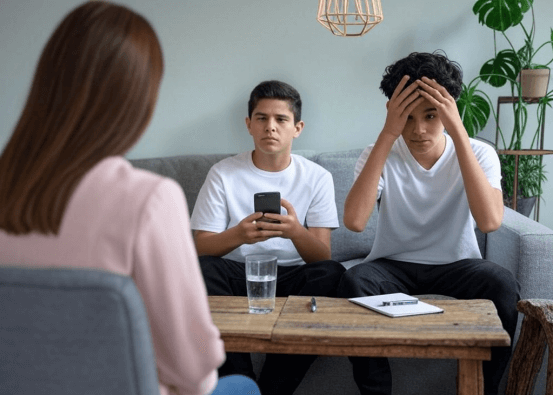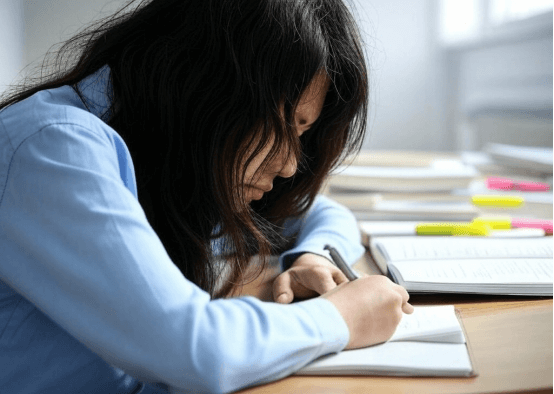Why Student Mental Health Matters: The Impact of Academic Pressure on Anxiety and Depression
Stress is ubiquitous in today's fast-paced world but for students in this country, it's a different game altogether. Being among the most educationally competitive countries, American students are not only under the most pressure from exams and homework but also balancing expectations of future success, the comparison trap of social media and the burden of economic and family responsibilities. The World Health Organization has long had the view that true health includes mental and social well-being, in addition to physical fitness. People can look all rainbows and sunshine on the outside, but on the inside they are falling down, that is not the way to be. Gone are the days when the topic of mental health was kept in the dark, it's becoming more of an issue among today's youth. We are reminded of the different mental dilemmas around us on 10th October, which we observe as World Mental Health Day.
Mental health problems can occur at any age, but one of the many consequences to students can be life-altering. This is about more than grades; it could determine their social skills, their routes in life. And today, it's even more difficult than it was just a few years ago. Distance learning, social isolation, and an uncertain future have ratcheted up anxiety and depression for many. Keeping this in mind I will be discussing the impact of academic pressure on student's mental health from a U.S. perspective, also the structure of support currently available, and get maybe a little bit predictive about what trajectory might unfold next. Let this sink in for a moment.
The State of Student Mental Health in the United States
Begin with the numbers; they are itself an eye-opener. More than 60% of U.S. college students communicated considerable anxiety and stress the previous year, according to the American College Health Association in March 2015. Roughly 36 percent had been diagnosed with anxiety disorders and 28 percent had depressive symptoms. Even more troubling? Nearly a third of respondents, 31%, reported feeling depression in the past year a similar sentiment to last year and 15% admitted to having thought seriously about suicide-the highest figure seen in 15 years of the study so far. One in seven college students saw that darkness. Meanwhile, the Healthy Minds Study of 2023 indicated 76% of students reported moderate to severe psychological distress with suicide now the second leading cause of death for US college students (approximately 1,100 lives lost annually).
It's not just college kids. It isn't just younger students who are struggling. Thirteen percent of teens ages 12 to 17 experienced at least one major depressive episode that year, according to the CDC in August 2024 and 70 percent of those teens didn't receive the help they needed. Previous data released by the federal health department found a 29% increase in anxiety and a 27% increase in depression among kids aged 3 to 17 years between 2016 and 2020. Behind this data are real stories: a high schooled whose sleep depends on SAT scores, a freshman struggling to find a place in a new world.
This reality is reflected in social media. The share of posts about student mental health on Twitter and Reddit has increased 50% since the previous year. #StudentMentalHealth content fills Instagram and TikTok. I did a quick Twitter poll: Is academic pressure your biggest source of anxiety? and 73% said yes. Another commented, Deadlines never stop can't breathe. I failed a class junior year and felt like a total loser, read one post on Reddit. These aren't merely venting sessions; they're calls for help. The maturity of children who were involved in school shootings -- both those who carried out the shooting and the victims -- wasn't merely about school anymore: It was a matter of mental health.
The pandemic only poured gasoline on that fire. This year, 80% of college students reported that COVID-19 affected their mental health, according to Active Minds, an organization dedicated to mental health on college campuses, and 20% reported the impact to be very severe. Remote learning severed face-to-face ties, and isolation was the final straw for many. At Richmond University Medical Center in Staten Island, New York, there are so many teens who need psychiatric help that they really have to do something about it. During the pandemic, this rose to 28%. These aren't numbers, they are figures that should wake up the schools and the society.
The Hidden Catalyst Academic Pressure
So why has academic pressure turned into such a behemoth? Education is the golden ticket to success in America. The race for elite universities begins at an early age, SATs, ACTs, PreAP classes, extra curriculars all of them must be endured or you will lose ground. According to a Pew Research Center survey, 61% of teens are crushed by the need to get good grades. In college, it's worse: the job market is cutthroat, and student-loan debt is staggering, so no slacking.
Let me give you an example using the daughter of a friend of mine in California. She is in a top high school, and her schedule's insane: up at 6 a.m. and done at 10 p.m., no time to breathe, let alone learn life skills like cooking or budgeting. She's not the only one many students are burned out. A 2020 study led by Posselt and Lipson of more than 40,000 college students discovered that in intensely competitive classrooms the risk of depression spiked 37 percent and anxiety 69 percent.
And then there's social media, where everyone's life appears picture perfect straight A's, internships of a lifetime, Ivy League acceptances. It's a measurement trap that can make students feel like they are failing. I saw a TikTok where a student was like, Everyone's winning scholarships while I'm crying over finals. The comments? Full of me too replies. It is a culture that cultivates anxiety and self-doubt.
Pressure can certainly inspire, but when it's never no, it breaks people. The American Psychological Association notes that anxiety and depression overlap in symptoms including insomnia and fatigue precisely what students describe when under stress. As time goes on, it's not just grades that fall apart, everyday life feels like a slog.

Mental Health Support In United States
Looking in the face of this crisis, the U.S. has deployed support from the top down. Here's a guide to what's happening across the country and in your region.
National Actions: Major Moves at the Top
Enlarge Image The federal government's stepping up. The Department of Education allocated $188 million in 2023 via the Bipartisan Safer Communities Act to bolster mental health service providers in schools in more than 30 states. That cash is meant to bring in 5,400 mental health pros and train 5,500 more. And Congress intends to inject another $1 billion into the initiative over five years to double the number of school counselors. Currently, many schools have ratios like 1 counselor for 500 students yikes. This could change that.
There's the U.S. Preventive Services Task Force, which in 2022 called for routine mental health screenings on every teen, age 8 to 18, regardless of whether they show symptoms. The idea? Identifying anxiety before it escalates to a more severe state. It is a prevention first approach that is gaining ground.
Colleges are also innovating. Florida Gulf Coast University, for instance, introduced group therapy sessions like a program called Bold Eagles for male students to discuss feelings and gender roles. It's reducing the stigma and developing peer support. FGCU's Jon Brunner calls it a sign that mental health is less taboo on campus.
Different Strokes: Place-Based Strategies
States and districts are also getting crafty. Texas enacted a law in 2019 requiring a state-mandated guide to mental health resources for schools that would be regularly updated. It's pragmatic and paves the way for partnerships with local health providers. California is a bit of a mixed bag demand exploded after the pandemic, but budget and staffing shortages have slowed the state down. Still, districts, such as Los Angeles Unified, established 24/7 mental health hotline for students, parents and staff. Long Beach Unified does proactive check-ins by phone simple but effective.
In Washington state, educators urged a complete overhaul of a 40-year-old school funding model to place mental health at its center. They want low counselor-to-student ratios, and on-campus health centers offering everything from counseling to telehealth. It is not fully implemented, but it is making waves. I read a comment on Twitter that captured it perfectly: If every school had a mental health center, students wouldn't have to suck it up.
Grassroots and Social Media
Nonprofits such as Active Minds are shaking things up, hosting campus events and employing data-based advocacy. Their surveys reveal that between 2021 and 2022, the percentage of college students who sought counseling or therapy increased from 30 percent to 37 percent progress! On social media, they turn to content tagged #MentalHealthAwareness to feel less isolated. TikTok creators share advice about breathing exercises or time management hacks nothing extravagant, but it works.

Looking Ahead
The U.S. is making progress, but this fight is not over yet. Academic pressure isn't disappearing, which leads us to smarter solutions. Could schools reduce competitive measures in assessment? Or apply tech to provide students greater flexibility? It's worth thinking about.
Awareness is step one for parents and students. Ask your kids about their stress level and not just their grades. Schools could make mental health education mandatory, instilling emotional skills in kids early. For the government, though, it's not just about dispensing money; it's making sure that aid gets into the hands of those who need it most.
I think back to my own school days, trudging through stress and having no support whatsoever. It makes me hopeful to see today's efforts. Here's to the future, where students pursue dreams with less anxiety and more joy. What do you think? Share your stories or thoughts in the comments!
